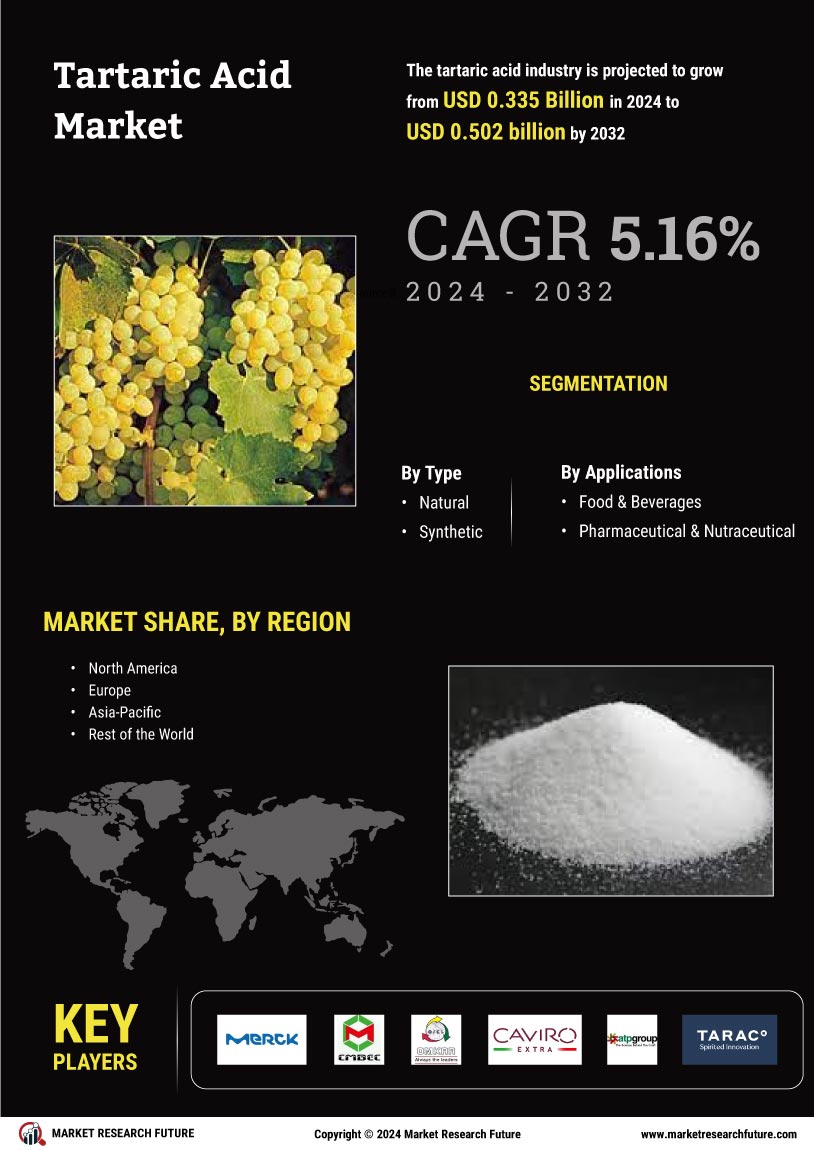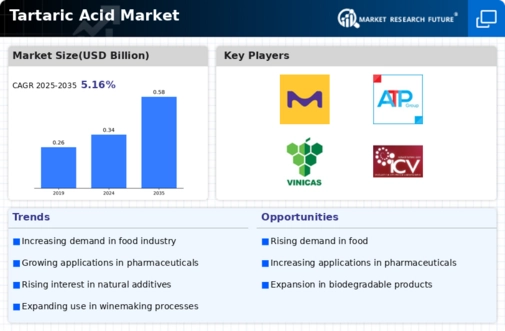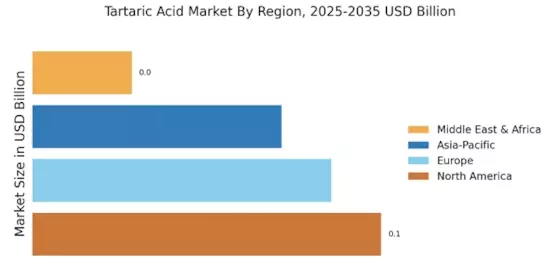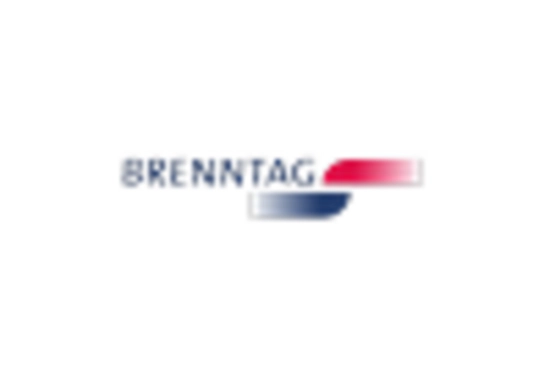Rising Demand in Wine Production
The Tartaric Acid Market is experiencing a notable surge in demand due to the increasing production of wine. Tartaric acid is a critical component in winemaking, contributing to the stability and quality of the final product. As wine consumption continues to rise, particularly in emerging markets, the need for tartaric acid is expected to grow correspondingly. In 2023, the wine industry accounted for approximately 60% of the total tartaric acid consumption, indicating a strong correlation between wine production and tartaric acid demand. This trend suggests that as more vineyards are established and existing ones expand, the Tartaric Acid Market will likely see sustained growth, driven by the evolving preferences of consumers for diverse wine varieties.
Emerging Applications in Cosmetics
The Tartaric Acid Market is expanding into the cosmetics sector, where tartaric acid is recognized for its beneficial properties. It is often used in skincare products due to its exfoliating and antioxidant effects. As consumers become more aware of the ingredients in their cosmetics, the demand for natural and effective components is rising. The cosmetics industry is projected to account for a growing share of the tartaric acid market, potentially reaching 10% by 2025. This trend indicates a shift towards incorporating multifunctional ingredients in cosmetic formulations, which could further drive the growth of the Tartaric Acid Market.
Growth in Food Preservation Techniques
The Tartaric Acid Market is also benefiting from advancements in food preservation techniques. Tartaric acid serves as a natural preservative, helping to maintain the freshness and quality of various food products. With the increasing focus on extending shelf life and reducing food waste, manufacturers are increasingly incorporating tartaric acid into their formulations. The food and beverage sector is projected to account for a significant share of the tartaric acid market, with estimates suggesting it could reach 25% by 2025. This growth is indicative of a broader trend towards utilizing natural additives in food processing, which aligns with consumer preferences for healthier and more sustainable options.
Increased Focus on Sustainable Sourcing
The Tartaric Acid Market is increasingly influenced by the focus on sustainable sourcing practices. As consumers and manufacturers alike prioritize eco-friendly products, the demand for tartaric acid derived from sustainable sources is on the rise. This shift is prompting producers to adopt more environmentally responsible methods of extraction and production. The market for sustainably sourced tartaric acid is expected to grow, potentially comprising 20% of the total market by 2025. This trend not only aligns with global sustainability goals but also enhances the appeal of tartaric acid in various applications, from food to pharmaceuticals, thereby reinforcing its position in the Tartaric Acid Market.
Innovations in Pharmaceutical Formulations
The Tartaric Acid Market is witnessing a transformation due to innovations in pharmaceutical formulations. Tartaric acid is utilized as an excipient in various medications, enhancing the stability and bioavailability of active ingredients. As the pharmaceutical sector continues to evolve, the demand for tartaric acid is expected to rise. Recent studies indicate that the pharmaceutical industry could represent around 15% of the total tartaric acid consumption by 2025. This growth is driven by the increasing need for effective drug delivery systems and the development of new therapeutic agents, suggesting a promising future for tartaric acid in pharmaceutical applications.

















